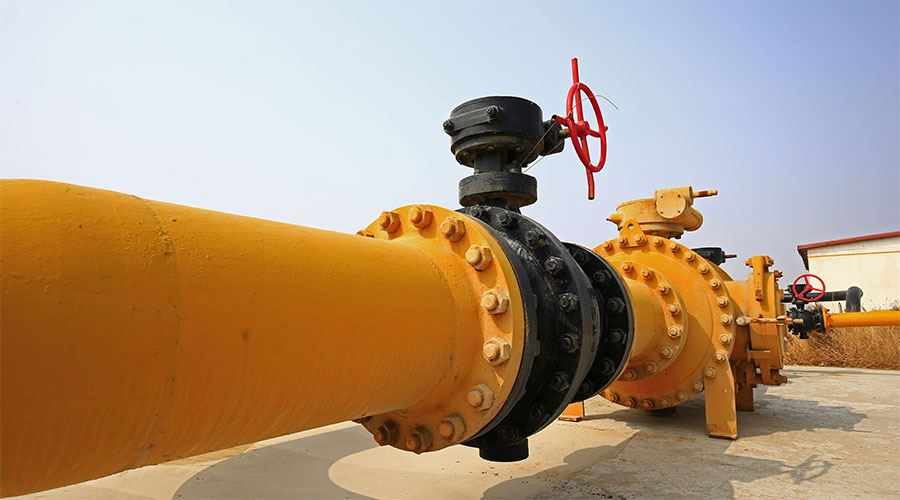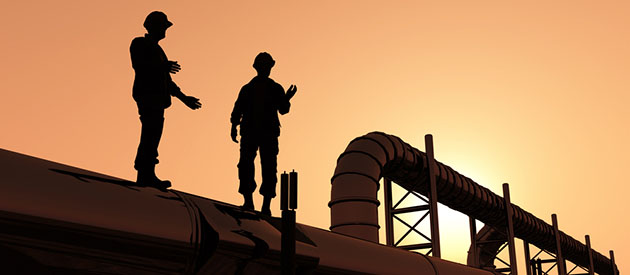Offsetting the steep rise in prices for crude oil and gasoline has been a collapse in the price for natural gas. A glut of natural gas inventory along with continued weak demand following the credit crisis has pushed natural gas prices to their lowest levels in a decade. This in turn has helped mitigate electricity and home heating costs this winter and has also lessened U.S. dependency on coal for power generation. Were it not for the ultra low natural gas price, rising gasoline and crude oil prices would be crushing the economy by now.

While low NG prices have been a blessing to consumers, it also carries the seeds of a curse. Natural gas demand is an excellent indicator for the underlying economic health of the nation. As such, the low NG prices are a reflection of low demand and suggest the internal state of the economy isn't as strong as the government would have us believe. This theme will become more evident as we enter 2013 when the bullish effects of the 4-year Presidential Cycles have subsided and we enter the final "hard down" phase of the 120-year cycle scheduled to bottom in late 2014. But for now the low natural gas price is more a help than a hindrance.
Low NG prices can only go so far in staving off the consequences of higher pump prices, however. Fuel prices represent one of the biggest expenditures for most working class families and the rising prices at the gas pump will weigh heavily on middle class wallets this spring. The impact will be especially hard if gas prices continue rising into the summer driving season as most expect. An increase in the gas price is essentially a tax and when fuel costs rise, consumer spending tends to drop incrementally. The last time the national average price-per-gallon of gas exceeded $4/gallon was in 2008, which coincided with the beginning of the credit collapse.
Last May, the national average gasoline price came just three cents shy of the psychological $4/gallon level before beginning a 7-month decline to $3.22 (see chart below). This time around consumers might not be so lucky. If the fuel price significantly exceeds $4/gallon this spring, a chain reaction will be set in motion which could imperil the economic recovery.

Even more significantly, rising fuel prices will push up retail food prices even further. As the following graph shows, the Consumer Food Price Index is approaching the all-time high levels from just before the 2008 credit collapse. A further increase in oil and gasoline prices would push food prices up to and possibly beyond this critical threshold.

Moreover, every $10-per-barrel increase in oil costs equals a 0.2% loss in Gross Domestic Product (GDP) over the course of a year, according to Mark Luschini of the firm Janney Montgomery Scott. Credit Suisse estimates that for each 1 cent increase in a gallon of gasoline, $1 billion in consumer spending is directed away from other goods and services annually. Writing in the March 12 issue of Businessweek, David Rocks wrote, "Retail sales in 2012 will probably total $4.8 trillion; so a 50 cent jump would siphon away more than 1 percent of those dollars – $50 billion – that might otherwise have gone to Wal-Mart Stores, Gap, or McDonald's."
The economic and political importance of high food prices can't be underestimated. To take one example, high food prices were the catalyst for last year's outbreak of revolution in several Middle East countries. The region once known as the Fertile Crescent is heavily dependent on imported grain and rising fuel costs contributed to the skyrocketing food prices which provoked the Arab revolts. Annia Ciezadlo, in her article "Let Them Eat Bread" in the March 23, 2011 issue of Foreign Affairs wrote: "Of the top 20 wheat importers for 2010, almost half are Middle Eastern countries. The list reads like a playbook of toppled and teetering regimes: Egypt (1), Algeria (4), Iraq (7), Morocco (8), Yemen (13), Saudi Arabia (15), Libya (16), Tunisia (17)."
Indeed, high food costs have long been a major factor in fomenting popular revolt. The French Revolution of the late 1700s originated with a food shortage which caused a 90 percent increase in the bread price in 1789. Describing the build-up to the Reign of Terror in France of 1793-94, author Susan Kerr wrote: "For a time, local governments attempted to improve distribution channels and moderate soaring prices. Against this backdrop of rumbling stomachs and wailing hungry children, the excesses and arrogance of the nobility and clergy strutted in sharp contrast."
This historical event has an obvious parallel in today's emphasis on the elite "1 percent" versus the "99 percent." The French government of the late 18th century attempted to assuage the pain caused by soaring food prices, but ultimately this effort failed. Although the U.S. government attempted for a time to keep fuel prices low, it has since abandoned all effort at stopping speculators from pushing prices ever higher.
An undercurrent of popular revolt is already present within the U.S. as evidenced by the emergence of the Tea Party and by last year's Occupy Wall Street movement. This revolutionary sentiment has been temporarily suppressed by the simultaneous improvement in the retail economy and the financial market rebound of the past few months. The fact that this is a presidential election year, replete with the usual pump priming measures and underscored by the peaking 4-year cycle, has been an invaluable help in keeping revolutionary fervor suppressed for the moment. But what those within the government and financial establishment have failed to consider is that once the 4-year cycle peaks later this year, we enter the final "hard down" phase of the 120-year cycle to bottom in late 2014. This cycle is also known, in the words of Samuel J. Kress, as the "Revolutionary Cycle."
Regarding the 120-year cycle, Kress wrote:
"The first 120-year Mega Cycle began in the mid 1770s after a prolonged depressed economy and the Revolutionary War which transformed American from an occupied territory to an independent country as we know the U.S.A. today. The first 120-year cycle ended in the mid 1890s after the first major depression in the U.S. and the Spanish American War. This began the second 120-year cycle which transformed the U.S. from an agricultural to a manufacturing based economy and which is referred to as the Industrial Revolution. The second 120-year is scheduled to bottom in later 2014 to begin the third (everything comes in threes). If history, an evolving cycle, continues to repeat itself, the potential for the third major depression and a WWIII equivalent exists and the U.S. could experience another transformation and our life style as we know it today."
Kress goes on to observe that the three elements which govern our lifestyles – political, economic and social – will come into play as the current 120-year cycle bottoms. "The third [120-year bottom] scheduled for later 2014 (‘everything comes in threes') should be a social revolution," writes Kress. "Could this be the demise of capitalism as we know it today? The 120-year Mega Cycle could also be referred to as the Revolution Cycle, [with] 2014 the Revolutionary low."
Since 2008, when gasoline first reached $4/gallon, U.S. demand for gasoline has dropped. According to oil analyst Lawrence Eagles of JPMorgan, weekly U.S. gasoline demand is "tepid" and is expected to fall this year by 100,000 barrels a day, even as the economy expands by an expected 2.2%. This has led many to question why prices are still rising if demand is so weak.
The media's favorite explanation is that East Coast refineries are shutting down due to a lack of profitability. Mention is also frequently made of the crack spread and the problems involved in using Brent crude instead of West Texas Intermediate (WTI) oil for refining. The saber-rattling over a possible war between Israel and Iran has also been blamed for rising fuel prices. But another reason is likely behind oil's continued rise and it has a direct impact on the current and future state of the global economy.
Richard Hoskins, author of War Cycles/Peace Cycles, has shed some penetrating light on this issue. He has pointed out that rising oil prices force world merchants to borrow new money into existence to pay the increased oil prices, thereby staving off the effects of deflation. The same can also be said of individuals, who are forced to spend more money into the economy instead of hoarding it, as has been their wont in recent years. In an interview last year Hoskins told me, "When you raise the oil price or lower the oil price that's the same as adjusting the money supply and it's done so very fast."
The S&P 500 Index (SPX) and the gasoline futures price have been trading essentially in tandem with each other for the last several months as the following chart illustrates. This is one example of how the latest stage of the recovery which began in March 2009 is being managed, not by quantitative easing or monetary policy, but by fuel price manipulation.

The conundrum of rising fuel prices in the face of falling demand can ultimately be explained by the critical fight against deflation by the world's leading governments, corporations and central banks. The oil price is being used to re-inflate the economy and force spending by preventing savings and the hoarding mentality. When it comes to managing the economy the most important consideration isn't so much the supply of money as it is the velocity of money. And money can be made to quickly change hands when prices are artificially raised through manipulation of the oil market, as we are finding out.
Despite this so-far-successful attempt at staving off deflation, it would do us well to consider that every bull market carries within it the seeds of its own demise. Artificially high oil and gas prices can only be pushed so far before the strong undercurrent of deflation breaks the upward trend of prices and forces them to much lower levels, just as we saw in 2008. The current cyclical bull market will be powerful while it lasts but is living on borrowed time: rising high food and fuel prices could deliver the death knell by the end of this year when the last of the Kress yearly cycles peaks (the 4-year cycle).
Gold ETF
The iShares Gold Trust (IAU, 16.27), our proxy for gold, has made no net progress in the last two weeks since its Feb. 29 sell-off and made a slightly lower low on Tuesday, Mar. 13. After falling under its 30-week moving average, IAU now looks like it may test the critical 60-week (300-day) moving average. The 60-week moving average has turned back declines in the past, including most recently November-December 2011 correction.

IAU needs to show us that it has bottomed, which it can do in the next few days by re-establishing support above the technically significant 60-week MA, which intersects the 15.60 level in the daily chart.
Clif Droke, Gold Strategies Review


























































